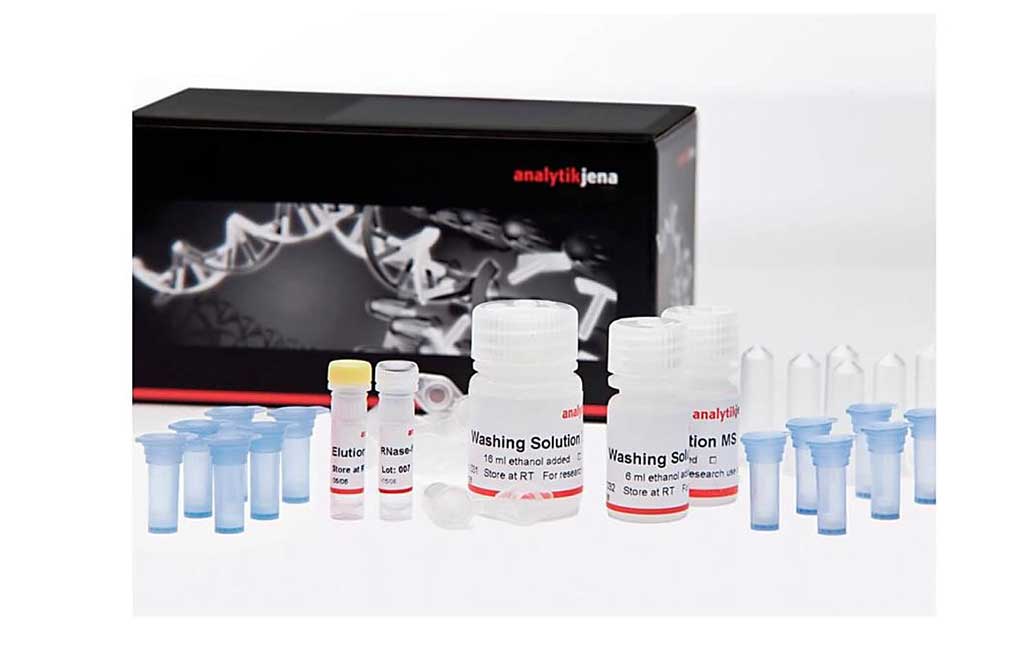Loop-Mediated Isothermal Amplification Discriminates Yaws Bacterium
By LabMedica International staff writers
Posted on 05 Feb 2020
Yaws, a neglected tropical disease caused by the bacterium Treponema pallidum subspecies pertenue, predominantly affects children living in low-income, rural communities of warm and humid regions.Posted on 05 Feb 2020
Clinical manifestations of Yaws include lesions of the skin, bone, and cartilage, progressing to severe destructive lesions if left untreated. Serologic tests, including the T. pallidum particle agglutination and rapid plasma reagin tests remain the primary diagnostic tools for yaws. Newer point-of-care serologic tests have replaced traditional laboratory-based serologic assays in many settings

Image: The innuPREP MP Basic Kit A for fast, efficient isolation of DNA and RNA of either viral or bacterial origin (Photo courtesy of Analytik Jena).
An international team of scientists working with the University of Freiburg (Freiburg, Germany) developed a novel molecular test to simultaneously detect T. pallidum and Haemophilus ducreyi based on mediator displacement Loop-Mediated Isothermal Amplification (LAMP). They validated the T. pallidum and H. ducreyi LAMP (TPHD-LAMP) by testing 293 clinical samples from patients with yaws-like lesions.
Swabs were collected from persons with yaws-like ulcers and placed in AssayAssure Multilock (Sierra Molecular, Princeton, NJ, USA) transport medium, then frozen at −20 °C until transported to Mast Diagnostica GmbH laboratory (Reinfeld, Germany). DNA was extracted from the samples by using innuPREP MP Basic Kit A (Analytik Jena, Jena, Germany). Isolated DNA was kept frozen at −20 °C until it was used for biplex T. pallidum and H. ducreyi LAMP (TPHD-LAMP), singleplex T. pallidum and H. ducreyi LAMP assays, and quantitative polymerase chain reaction (qPCR) testing.
The team detected T. pallidum in 59 (20.1%) samples, H. ducreyi in 155 (52.9%) samples, and T. pallidum and H. ducreyi co-infection in 19 (6.5%) samples using qPCR. When tested by TPHD-LAMP, they detected T. pallidum in 60 (20.5%) samples and H. ducreyi in 163 (55.6%) samples. They detected both targets in 12 (4.1%) samples. Taking qPCR as the reference standard, the diagnostic sensitivity of the TPHD-LAMP assay for T. pallidum was 84.7% and the specificity was 95.7%. For H. ducreyi, the sensitivity of the TPHD-LAMP assay was 91.6% and the specificity was 84.8%.
The authors concluded that their novel assay provided rapid molecular confirmation of T. pallidum and H. ducreyi DNA and might be suitable for use at the point of care. TPHD-LAMP could support yaws eradication by improving access to molecular diagnostic tests at the district hospital level. The study was published in the February 2020 issue of the journal Emerging Infectious Diseases.
Related Links:
University of Freiburg
Sierra Molecular
Mast Diagnostica
Analytik Jena








 (3) (1).png)





